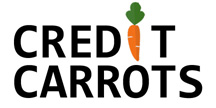The Registered Education Savings Plan (RESP) is a Canadian government regulated account (similar to TFSA’s) that provides tax advantages for money that is going towards paying for higher education.
The money in your RESP account can be invested in a wide range of securities. No investment gains in the account will be taxed as long as the money is used towards higher education expenses. If you’re planning on paying for all or part of your child’s education, then a RESP account is a must-have.
Benefits of Registered Education Savings Plan (RESP)
The three main benefits of a RESP account are government contributions, tax sheltered growth, and flexibility. Let’s dig into the benefits of a RESP account.
How much money does the government contribute to your RESP?
As a reward for putting money into your RESP account, the government will contribute money to your account primarily through the Canada Education Savings Grant (CESG) and Canada Learning Bond (CLB).
Basic CESG. Each year, the government will match your RESP contributions by 20% – up to a maximum of $500 per child. This means that you need to contribute $2,500 a year to get to the maximum $500 government contribution. Don’t fret if money is a little tight this year. Your child can carry forward unused grant contribution room until they turn seventeen. There is a lifetime government grant limit of $7,200 for each child.
Additional CESG. Based on your income, the government might top up your contribution on the first $500 of annual RESP contributions by an extra 10-20%. You’ll have to check the latest rules to see if you qualify for this additional CESG.
Canada Learning Bond. The Canada Learning Bond (CLB) is aimed at children from low-income families. The Government of Canada contributes up to $2,000 to an RESP for an eligible child.
For the latest details on these government grants click here.
Tax Sheltered Growth
One of the great things about a RESP is that the investment earnings are not taxed. When you eventually withdraw the funds for your child’s education, the withdrawals are taxed in their name. Since they would be a student, this often results in little to no tax.
Flexibility
You can hold a wide variety of investments in your RESP account including cash, mutual funds, GICs, stocks, bonds, and ETF’s. If your child decides to not pursue post-secondary education, then you may be able to choose a new beneficiary (e.g. grandchildren). You also have 35 years to use the RESP funds in case your child wants to travel first before starting school.
Types of RESP Plans
If you have decided that you want to open a registered education savings plan, then the next step is to decide what type of plan you’re opening. Currently, the government offers three plans: family, individual, and group. If you’re saving for your child, then the most common plan is the family one.
For the types of plans available today, check out: https://www.canada.ca/en/employment-social-development/services/student-financial-aid/education-savings/resp/choose-plan.html
How to Use Money in the RESP
When your child enrolls in higher education, they can start receiving payments from their RESP. The payments from the RESP will count towards the child’s income. Since their income is likely to be very low when they’re a student, there is likely no taxation on those dollars.
In order to get the money from the RESP, the government just needs the beneficiary (student) to provide proof of enrollment confirming their status as a full-time or part-time student in a qualifying program.
If it happens that the money in the RESP cannot be used for whatever reason, then you can withdraw the initial contribution with no tax penalty since it was made with after-tax dollars. However, any CESG remaining in the plan must be repaid (up to a maximum amount equal to 20% of the withdrawal).
We are not financial advisors, and no content on this site should not be taken as financial advice. No guarantee can be made if you invest based on the information provided on this blog. We make no warranty of any kind regarding the blog and/or any content, data, materials, information, products or services provided on the blog.











Leave a Comment